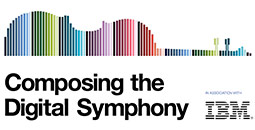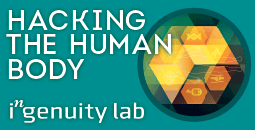Leading the charge
Society faces a critical challenge: Increasingly expensive fossil fuel reserves, which so many individuals and firms rely on for their energy needs, will be exhausted in the foreseeable future. Combine this with the dangers and costs of global warming and rising carbon dioxide levels, and it’s clear that increased energy efficiency is an absolute must
Society faces a critical challenge: Increasingly expensive fossil fuel reserves, which so many individuals and firms rely on for their energy needs, will be exhausted in the foreseeable future. Combine this with the dangers and costs of global warming and rising carbon dioxide levels, and it's clear that increased energy efficiency is an absolute must
Energy companies must be responsible for designing updated, cleaner technology for generating energy, transporting and distributing it to consumers, and automating the controls of its end devices – all to achieve the greatest possible energy efficiency and ensure quality, safety, and reliability that enables the technology’s use on a mass scale.
Energy generation
Fossil fuel power plants are gradually being replaced by a higher number of smaller, distributed renewable energy sources, many of which are owned by private investors or commercial investors from outside the utilities industry. This shift gives consumers more choices around the source of their energy, and the options will only continue to expand.
Transportation and distribution
Utility companies are enhancing the current infrastructure for transporting and distributing energy to form a fail-safe Smart Grid with optimal load balancing.
With a Smart Grid, energy companies can more easily see where energy is going and influence how it is being used, while also giving consumers greater control over their own energy consumption.
The Smart Grid’s “nervous system” would be an IT network that monitors and controls the power grid. An advanced metering infrastructure (AMI) is a crucial piece of this Smart Grid technology. The AMI connects Smart Meters, via concentrators, across the grid to central data hubs – known as meter data management systems. This enables bi∞directional, real-time communication within the Smart Grid and high-speed communication with the utility companies’ application systems, such as SAP’s customer relationship management, billing, or enterprise asset management solutions.
End devices and customer installations
Many consumers’ energy-intensive devices, such as air conditioning units, are being replaced with more energy-efficient versions that can be controlled remotely by the utility provider. The provider can then use central commands that are sent via the Smart Grid and the local Smart Meter to the programmable thermostat of an individual air conditioning unit.
The road to energy efficiency
The path to increased energy efficiency requires a shift in attitude for both energy consumers and providers. Many of today’s consumers only know that their electricity comes from a socket. They know little about the origins of that energy, or the many processes involved in bringing it to their home or business. And when it comes to adopting new, greener technology, the cost of such an initiative often scares customers away.
To help customers embrace a shift toward energy efficiency, the utility industry must be able to show consumers that the time and money they invest in the new technologies will be worthwhile. And although consumers certainly care about protecting the environment by helping reduce carbon emissions, the deciding factor will likely be the hard cost savings that reduced energy consumption generates. In other words, you’ll need to show customers just how these changes will save them money.
The Smart Grid initiative
Enabling energy efficiency through Smart Grid technology requires an investment by energy companies and a shift in how they have traditionally done business. Cooperation and co-innovation among energy providers, energy distributors, and all those who touch the energy sales process have become more important than ever.
With this in mind, SAP — which provides software that many utilities companies currently use, is working to ensure that its applications and tools will integrate with energy infrastructures to enable the Smart Grid. SAP formed the AMI Lighthouse Council – made up of companies that use SAP for Utilities for customer management, energy data management, and billing – as a forum of co-innovation for the integration of AMI systems with SAP for Utilities.
The council’s main goal was to determine and define the functional enhancements required within SAP for Utilities so the solution could support Smart Grid technology. To do so, council members came up with specific, standard use cases of common business processes required for energy efficiency. Here are examples of use cases that companies looking to enable Smart Grid technology will need to perform:
On-demand meter read: This refers to a utility call centre’s ability to read consumption data from Smart Meters online, or a consumer’s ability to access this information using a utility self-service.
Utility reconnects customer: This refers to energy companies’ ability to use a software transaction to reconnect the electricity or gas supply of an unoccupied premise after being notified that a customer is moving in or has paid outstanding bills.
Price signal: This refers to a utility company’s ability to use the AMI system to send pricing information to a location’s Smart Meter, enabling the consumer or a local energy management system to optimise electricity consumption.
Introducing the MDUS concept
For each use case, the AMI Lighthouse Council developed a model for how SAP for Utilities would cooperate with a meter data management system. To support these use cases, the council created the ideal vision of how a meter data management system should work: the MDUS (Meter Data, Unification and Synchronisation) concept. In this concept, the meter data management software acts as a gateway to the AMI systems (and all of the Smart Meters installed within them) and connects to SAP for Utilities, which acts as the cockpit for all commercial and administrative transactions related to the consumers’ use of Smart Grid technology.
Simplifying system collaboration
A very strict, preferably non-redundant definition of responsibilities for both systems is needed to ensure that the architecture for system collaboration is kept as simple as possible. Unnecessary complexity would hinder cooperation between back∞end systems and the millions of Smart Meters to which they connect. Such complexity could also result in inconsistent data, system downtime, poor performance, and high maintenance costs.
To enable simplicity, MDUS systems encompass the following areas:
Meter data: The MDUS is the system of record for consumption values, meter readings, and event values. It receives this information directly from AMI data collection systems.
Unification: The MDUS integrates with AMI systems from various manufacturers and different releases and makes the characteristics of these different systems transparent to back∞end systems like SAP for Utilities.
Synchronisation: The MDUS requires additional data than what the AMI system delivers, including meter and device master data, the unique point of delivery (PoD) number of each premise in a deregulated market, energy product and rate information, and status information for Smart Meters. It will obtain this data from back∞end systems, such as SAP for Utilities, that act as the system of record. The MDUS will then synchronise itself and the AMI systems to which it is connected, and each AMI system will synchronise the meters it controls. The more stringently this synchronisation is organised and the less data each system needs to synchronise, the lower the risk of delays, or even errors, if the synchronisation fails.
Designing SAP AMI integration
After defining the use cases mentioned above, the council identified all of the functional enhancements required in SAP for Utilities to support Smart Grid technology, including electronic meter readings, efficient distribution of detailed consumption measurements to the applications that need them, automatic connections and disconnections, service changes, direct notification of local disruptions, sending text messages to customers or control signals to local end devices, and much more.
The council also realised that SAP solutions’ marketing, sales, and billing functionality must support new energy products and services that encourage consumers to save energy.
These conclusions led SAP, the AMI Lighthouse Council, and SAP partners to embark on an extensive development project, the result of which is the new SAP AMI Integration for Utilities software. This software has been available since November 2008 and is based on SAP ERP, enhancement package 4, and SAP Customer Relationship Management (SAP CRM) 7.0.
In addition, since our partners’ MDUS systems require further development to execute the use cases outlined above in collaboration with SAP for Utilities, each MDUS system communicates with SAP for Utilities based on services. Providing these services in SAP for Utilities makes it easier for the AMI/MDUS partners to carry out the developments needed for the integration.
One of the members of the AMI Lighthouse Council, US utility company Consumers Energy, headquartered in Jackson, Michigan, provided a prototype infrastructure that contains all relevant components covering the spectrum of Smart Grid technology: Smart Meters from several manufacturers, various data communication methods, systems from various AMI and MDM manufacturers (including AMI Lighthouse Council members eMeter, Itron, and OSIsoft), Landis & Gyr and the current release of SAP for Utilities.
This prototype provides an excellent framework for comprehensive test and pilot operation, in which the AMI Lighthouse Council members are involved.
Conclusion: An energy-efficient future
The AMI Lighthouse Council will continue its work in the coming years. The council’s success has led the Advisory Customer Council Utilities (ACCU), the SAP for Utilities user group, to form an AMI/Smart Grids working group and even open it up to non-member SAP customers. The ACCU represents 20 international and market∞leading utility companies that work with SAP to define future requirements for SAP for Utilities.
Both customer groups are very keen on cooperating with SAP and its partners to improve their solutions and prepare to take part in the Smart Grid initiative. We look forward to cooperating with customers and partners to help millions of companies and hundreds of millions of private consumers improve their long∞term energy efficiency, reduce their carbon footprint and save energy costs.













